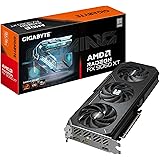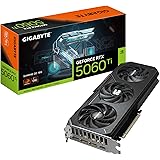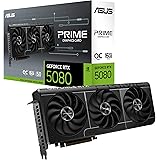An Analysis of its Viability in Contemporary Cryptocurrency Mining for the The Dayun Zig Z1
This post examines the Dayun Zig Z1, an Application Specific Integrated Circuit (ASIC) miner, evaluating its performance, profitability, and overall viability in the current cryptocurrency mining landscape. It will delve into the technical specifications of the miner, its historical context, and its potential for future use, while weighing the pros and cons of its operation.
Introduction to the Dayun Zig Z1
The Dayun Zig Z1 is an ASIC miner designed to mine cryptocurrencies using the Lyra2REv2 algorithm. This algorithm was popular for mining coins like Monacoin (MONA), Vertcoin (VTC), and Verge (XVG). Released during a period of rapid innovation in cryptocurrency mining hardware, the Zig Z1 promised a high hashrate and competitive power efficiency. However, the cryptocurrency mining industry is characterized by constant technological advancements and fluctuating market conditions. This makes the long-term viability of any specific miner uncertain.

Technical Specifications and Performance
The Dayun Zig Z1 boasts a hashrate of 6. 8 Gh/s for the Lyra2REv2 algorithm while consuming 1200W of power. Its chip size is 28 nm, and it operates at a noise level of 70 db. The miner utilizes two fans for cooling and requires 12V power via eight 12V-6pin PCI-E connectors. It connects to a network through an Ethernet interface and is designed to operate at a temperature of 40°C.
Power efficiency is a crucial metric for evaluating mining hardware. The Zig Z1 has a power efficiency of 0. 176 j/Mh. This means it consumes 0. 176 joules of energy for every megahash of computational power it provides. While this efficiency may have been competitive at the time of its release, newer mining hardware has significantly improved upon this metric.
Historical Context and Market Impact
To understand the current viability of the Dayun Zig Z1, it is important to consider its historical context. The cryptocurrency mining industry has evolved rapidly over the past decade. Early mining was primarily done using CPUs and GPUs. As the industry matured, ASICs emerged as the dominant hardware. ASICs are specifically designed for a single mining algorithm, offering significantly higher hashrates and better power efficiency than general purpose hardware.
The Dayun Zig Z1 was released during a period when ASIC development was accelerating. While it offered a substantial improvement over GPU mining for Lyra2REv2 coins, it was quickly surpassed by newer, more efficient ASICs. This rapid obsolescence is a common challenge in the cryptocurrency mining industry. Miners must constantly evaluate the cost-effectiveness of their hardware. They must also consider upgrading to remain competitive.
Mining Profitability and Economic Considerations
The profitability of mining with the Dayun Zig Z1 depends on several factors: the price of the mined cryptocurrency, the difficulty of the mining algorithm, and the cost of electricity. The Lyra2REv2 algorithm is used by several different cryptocurrencies, including Monacoin, Vertcoin, and Verge. The profitability of mining these coins varies depending on their market price and mining difficulty.
Electricity costs are a major consideration for any cryptocurrency miner. The Dayun Zig Z1 consumes 1200W of power, which can result in a significant electricity bill, especially in regions with high electricity prices. To determine profitability, miners must calculate the potential revenue from mining and subtract the cost of electricity. Other costs such as cooling and maintenance should also be considered.
In recent years, the profitability of mining with older ASICs like the Dayun Zig Z1 has declined due to increased competition from newer, more efficient hardware. As newer ASICs enter the market, the mining difficulty increases, making it more difficult for older hardware to earn a profit.
Alternative Mining Options and Strategies
Given the challenges of mining with the Dayun Zig Z1, miners may consider alternative options and strategies. One option is to join a mining pool. Mining pools combine the computational power of multiple miners, increasing the chances of finding a block and earning a reward. Another option is to mine different cryptocurrencies. Miners can switch to mining more profitable coins, but this requires hardware that supports multiple algorithms.
Another strategy is to sell the mining hardware. As ASICs become obsolete, their resale value decreases. However, miners may be able to recoup some of their initial investment by selling their hardware to hobbyists or collectors. Some miners may also choose to repurpose their hardware for other computational tasks, such as scientific research or machine learning.
The Role of NiceHash and Multi-Algorithm Pools
NiceHash is a marketplace that connects buyers and sellers of computing power. Miners can connect their hardware to NiceHash and sell their hashrate to buyers who want to mine specific cryptocurrencies. Multi-algorithm pools offer a similar service, allowing miners to automatically switch between different algorithms based on profitability.
The Dayun Zig Z1 can be used with NiceHash and multi-algorithm pools that support the Lyra2REv2 algorithm. However, the demand for Lyra2REv2 hashrate may be low, which can limit profitability. Miners should carefully evaluate the potential returns before connecting their hardware to these services.
Future Developments and Potential Revivals
While the Dayun Zig Z1 may not be highly profitable today, future developments could potentially revive its usefulness. One possibility is the emergence of new cryptocurrencies that use the Lyra2REv2 algorithm. If a popular new coin were to adopt this algorithm, it could increase demand for Zig Z1 miners and boost profitability.
Another possibility is the development of more efficient cooling solutions. If miners could reduce the power consumption of the Zig Z1, it could become more competitive. Additionally, advancements in mining software could potentially optimize the performance of the Zig Z1 and improve its efficiency.
It is also possible that the price of cryptocurrencies like Monacoin, Vertcoin, and Verge could increase significantly. If these coins were to experience a bull run, it could make mining with the Zig Z1 more profitable. However, predicting the future of cryptocurrency prices is highly speculative.
Evaluating the Viability of the Dayun Zig Z1
In conclusion, the Dayun Zig Z1 is a piece of cryptocurrency mining hardware with a specific historical context and technical capabilities. While it remains functional, its profitability is limited by its power consumption, the availability of more efficient hardware, and the fluctuating market conditions of the cryptocurrencies it can mine.
For those with access to very cheap electricity or a strong interest in mining specific Lyra2REv2 coins, the Zig Z1 may still be “usable enough.” However, for most miners, investing further in running the Zig Z1 purely for profit is likely not worthwhile. The best approach is to carefully evaluate the costs and potential returns, and to consider alternative mining options or strategies.
The cryptocurrency mining industry is constantly evolving, and the viability of any specific hardware is subject to change. As technology advances and market conditions shift, miners must adapt and make informed decisions to remain competitive. The Dayun Zig Z1 serves as a reminder of the rapid pace of innovation in this dynamic field.
Summary of the Dayun Zig Z1 Specifications :
- Chip size : 28 nm
- Noise level : 70 db
- Fans : 2
- Power Consumption : 1200 W
- Power Efficiency : 0.176 j / Mh
- Voltage : 12 V
- Interface : Ethernet
- Power Connectors : 8 x 12V-6pin PCI-E
- Operating Temperature : 40°C

Dayun Zig Z1 Mining Hashrate :
- Lyra2REv2 [ (XVG) & (VTC) & (MONA) ] Mining Hashrate : 6800 MH/s
Minable coins :
- Monacoin (MONA)
- Vertcoin (VTC)
- Galactrum (ORE)
- Rupee (RUP)
- Straks (STAK)
- Verge (XVG)
Dayun Zig Z1 Mining with Nice Hash Profits :

Price on cryptosupply : 4193 €
https://www.youtube.com/watch?v=rZbYaMvdJEQ




